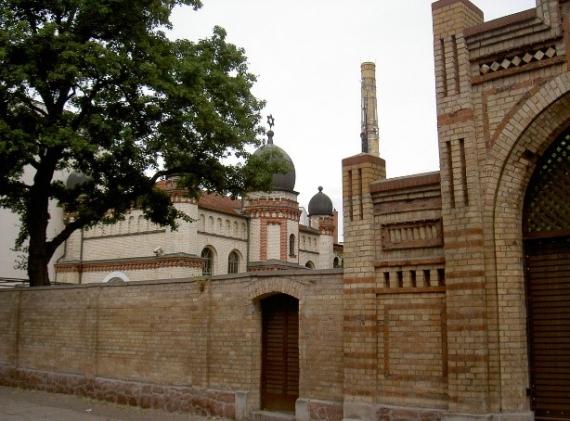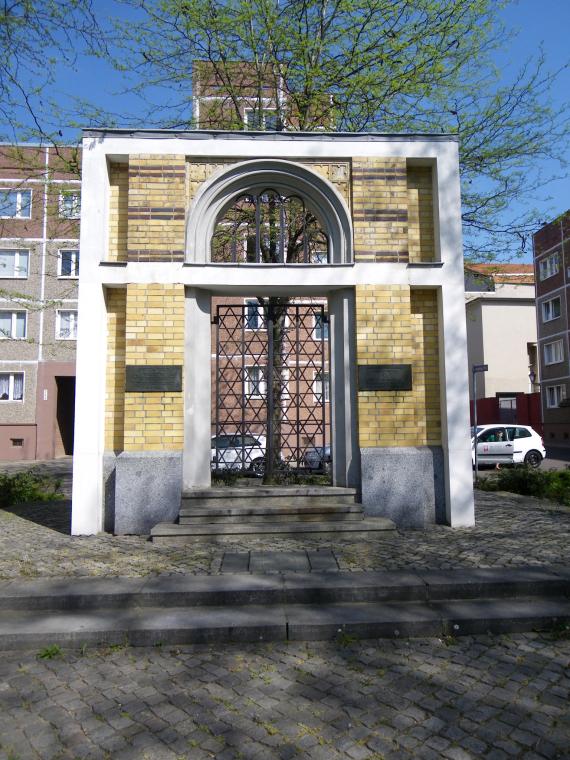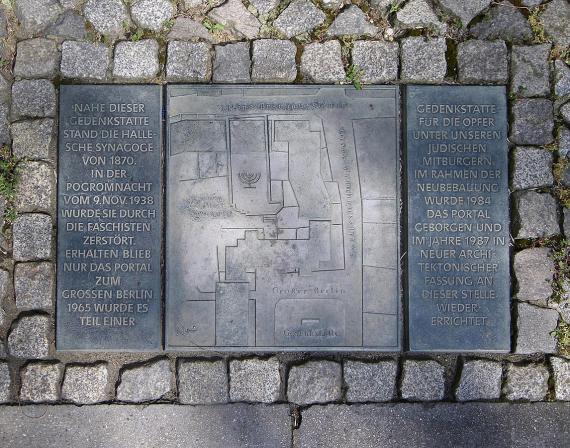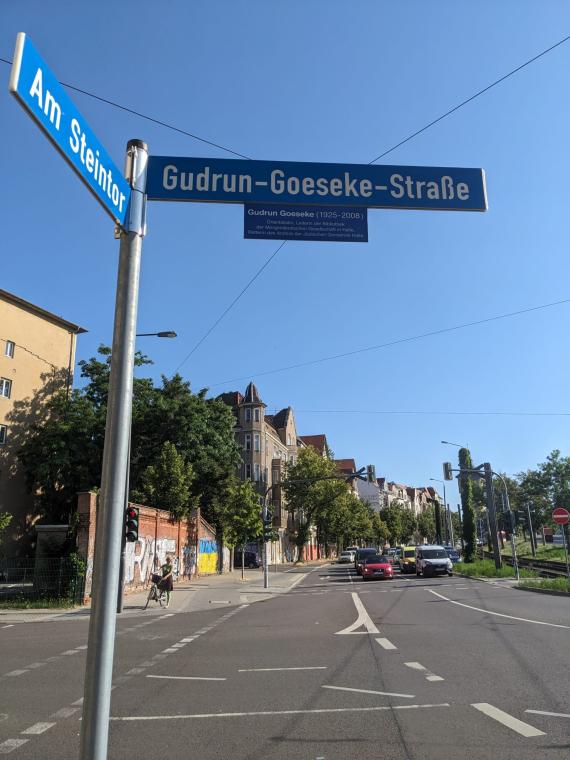The post-war Jewish community in Halle
At the time of the invasion by Soviet troops, only 49 Jews were still living in the city on the Saale and the surrounding area. Shoah survivors decided to return as early as the summer of 1945. Many of the "displaced persons" now arriving in Halle had survived the Nazi era in concentration camps, for example. While some were passing through, others were looking for a new home here in view of their destroyed homes. A special department for "Jewish Affairs" was set up within the "Relief Organization of the Province of Saxony" to look after them, with rooms at Burgstraße 46. It was headed by the Polish businessman and Theresienstadt survivor Hermann Baden (1883-1962), who was also responsible for general care: he helped the displaced persons to find accommodation and jobs and took care of the "JOINT parcels" filled with food.
Hermann Baden was also the man under whose leadership the post-war Jewish community in Halle was founded in 1947. The community in Bitterfeld, which only existed for a short time, was also incorporated soon afterwards. The state association of Jewish communities in the state of Saxony-Anhalt was based in Halle from 1947, as was the Association of Jewish Communities in the GDR under the chairmanship of Hermann Baden from 1952 to 1962.
Spaces for the community
The new beginning required premises. Both the community center and the synagogue had been damaged during the November pogroms. One of the board's early tasks was to restore the mourning hall at the Jewish cemetery on Dessauer Straße (formerly Boelckestraße) so that the deceased could be buried appropriately. The mourning hall was misused as a collection camp during the National Socialist era. It was then confiscated by the Soviet army and used to house refugees and later as an SED party office. In 1953, the municipality received the mourning hall back in a catastrophic condition and had to lease it to the city due to a lack of funds for renovation, which continued to use the building as a retirement home. A smaller mourning hall was built as a replacement.
With the financial support that the Jewish community of Halle applied for from the Minister President of Saxony-Anhalt in the fall of 1947 and received after a lengthy process in 1952, the cemetery on Humboldtstraße could be converted into a prayer room. The community now had a synagogue again, which was consecrated in July 1953. After lengthy negotiations, the congregation also regained its community center so that it no longer had to resort to board members' apartments for meetings.Memorial
In 1965, the GDR authorities erected a memorial on the former site of the Synagogue on Großer Berlin. In the mid-1980s, it had to make way for a new development on the square. Since 1984, a memorial in the form of a reconstructed portal on the former Am Großen Berlin site has commemorated the former synagogue.
Scandal
After the death of Hermann Baden, the Jewish community in Halle was led by Karin Mylius (née Lobel 1934-1986) from 1968 to 1986. In the 1980s, it came to light that her father had been a policeman under the Nazi regime and had taken action against Jews. The presumed aim of her false identity as the daughter of Nazi victims was to gain trust in the Jewish community. The author Ursula Hohmann wrote in 2000 that the SED member Mylius had probably been "deliberately infiltrated into the Jewish community by certain state organs". During this time, the community structures began to deteriorate, so that by the end of the GDR, the community had only three members out of a total of sixty practicing Jews in the whole of Saxony-Anhalt. While many congregations only held services on the High Holidays due to low membership numbers, members of the congregation from Halle were usually guests in other congregations. After Karin Mylius was removed from office, it was not until 1987 that a new chairperson was found in Käthe Ring from Upper Silesia, who had survived the Nazi era in the district of Halle illegally.
Gudrun Goeseke
Completed in 2016, Gudrun-Goeseke-Straße at Steintor in Halle was named after the librarian of the same name. Gudrun Goeseke (1925-2008) researched the Jewish history of Halle and made it accessible. In 1978, Goeseke found old documents in a cellar of the Jewish community center during clean-up work, including deportation lists and photos of Jews deported from Halle. Goeseke also tried to publicize how the SED interfered in the Jewish community through the person of Karin Mylius. However, she was prevented from doing so by the State Security, which monitored her from then on. Only when the GDR came to an end did Gudrun Goeseke become a member of the Jewish Community of Halle, where she was able to continue working on the archives of the Jewish Community of Halle.
Immigration from the 1990s onwards
In the early 1990s, the immigration of Jews from former Soviet Union states also began in Halle and the surrounding area. They were accommodated in the reception centers in Klostermansfeld and Helbra. As a result, the number of community members rose again for the first time, so that the community council was able to welcome twenty new members to the synagogue in Halle on Rosh Hashanah in September 1991.






URL: Siehe Weiterführende Links
Add new comment